Insectivorous Plants
Carnivorous or insectivorous plants are those plants that capture and digest insects or other animals using pitfalls and traps which is an amazing fact. There are around 583 species of these plants. They have the features to attract, trap, kill, and digest the prey and then absorb the nutrients from them. So let’s find out which are those plants and their characteristic features.
Here are seven examples of these amazing plants: Venus Flytrap, Sundew, Pitcher Plant, Monkey Cup Plant, Bladderwort, Butterwort, and Cobra Plant. Each of these plants has unique adaptations to capture and digest insects, such as sticky hairs, slippery surfaces, or specialized traps. These plants thrive in nutrient-poor environments and have evolved to use insects as a source of nitrogen and other essential nutrients.
Pitcher plant
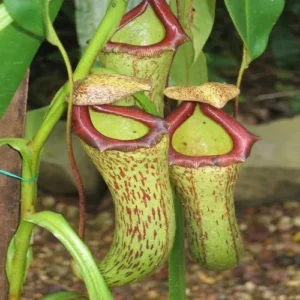
The first one among the insectivorous plants is the pitcher plant which we have read in our school science book also. They are native to North America and it is mainly found in the bogs and fens all across Canada.
It has highly specialized pitcher-shaped leaves to capture the insects which sit on the leaves. The bottom part of each pitcher is filled with a digestive fluid in which the prey drowns and decomposes.
Some species of pitcher plants also have a slippery rim that makes it hard for insects to escape once they have fallen into the pitcher.
Venus Flytrap
It is native to subtropical wetlands on the east coast of the United States in North and South Carolina. As its name suggests flytraps snap shut in just 0.1 seconds when triggered by an insect on a host of unfortunate flies, thanks to tiny trigger hairs.
Its main diet is ants, spiders, grasshoppers, and beetles with fewer than five percent flying insects.
They can live up to 20 years in the wild. While most of their energy is obtained through photosynthesis, insects provide them with nutrients that are not readily available in the soil. The plants are pollinated by flying insects but they eat crawling insects which is an amazing fact.
Bladderworts
Utricularia, commonly and collectively called the bladderworts, is a genus of carnivorous plants occurring in fresh water and wet soil as terrestrial or aquatic species across every continent except Antarctica. They are cultivated for their flowers which are often compared with snapdragons and orchids.
They capture small organisms using bladder-like traps at lightning speed. They wait for prey animals to touch trigger hairs situated on the trapdoor which closes the trap watertight. All bladderworts are rootless.
Cobra lily
Darlingtonia californica, also called California pitcher plant is a species of carnivorous plant. It is the sole member of the genus Darlingtonia. Native to northern California looks like a cobra snake is unique among the three genera of American pitcher plants.
It does not trap rainwater in its pitcher. Instead, it regulates the level of water inside by releasing or absorbing water into the trap that has been pumped up from the roots.
Monkey Cup
Nepenthes is a genus of insectivorous plants also known as tropical pitcher plants or monkey cups. The name comes from the monkeys occasionally drinking the fluid found in the pitchers.
A native of Southeast Asia and Australia forms pitchers (cups) that hang from trees. Its beautiful top, colorful flowers, and nectar which relate to raw meat attract beetles, butterflies, flies, and other types of insects. This plant is mainly found in wetland areas but can survive in relatively warm temperatures.
Sundew
Sundew plants are a type of carnivorous or insectivorous plants known for their sticky, glandular leaves which trap and digest insects. It also produces a sweet scent to attract prey. Some species of sundew are capable of rapid leaf movement to trap prey more effectively.
They are found in wet environments worldwide and there are over 200 species of sundews. Sundews use their sticky tentacles to attract and capture prey, which they then digest with enzymes. They are fascinating plants and a must-see for any plant enthusiast!
Butterwort
This plant also known as pinguicula has leaves covered in sticky, glandular hairs that trap insects. It also secretes enzymes that break down the insect’s exoskeleton, making it easier to digest.
It is also used in traditional medicines to treat respiratory and digestive issues. They grow in nutrient-poor, alkaline soil. They are widely cultivated by plant lovers.
They produce a strong bactericide that prevents insects from rotting while they are being digested. They are used to curdle milk.
Benefits of Insectivorous Plants
- The benefits of insectivorous plants is that they help keep away mosquitoes flies, etc. So we can keep these plants in our home also for maintaining the sanitation of the house and prevention of certain diseases like dengue and malaria.
- Also, they maintain the ecosystem as well. They can be kept by garden lovers as decorative plants because of their beauty as well as their benefits.
Easiest Insectivorous plants to grow
- The easiest plants to grow is Venus Flytraps, sundews, and some Trumpet Pitchers.
Insectivorous plants grown as indoor plants
- These plants can be grown as indoor plants but growing them at home is different from growing normal plants. They need the following care for their good growth-
- They need acidic soil for their good growth not just normal soil. Well-draining but moist soil is a must. For this combine sand and peat moss in equal parts.
- Bright indirect light is needed. Be careful to overheat the plants if kept inside the terrarium.
- A high humidity in the environment is needed by these plants by kept in a terrarium with some airflow via a gap in the lid.
- Water the plants with water which is alkaline in nature. Purified water should be avoided.
- The soil must be kept moist with good drainage from root rot.
- Lastly, these plants need insects as food for their normal growth which should be available to them. You can release some crickets or other store-bought insects inside the terrarium.
Do read – Yellow Pitcher Plant, Australian Sundew
Conclusion
In conclusion, insectivorous plants play a vital role in their ecosystems by helping to regulate insect populations, thriving in nutrient-poor soils, and offering unique insights into the world of plant adaptation and ecology. Their existence and significance contribute to biodiversity, scientific research, and horticultural interest, making them intriguing and valuable components of the natural world.
Let’s conclude that we have read about amazing facts about the 7 carnivorous or insectivorous plants. Let me know whether this article was useful and any suggestions in the comments section.
FAQs
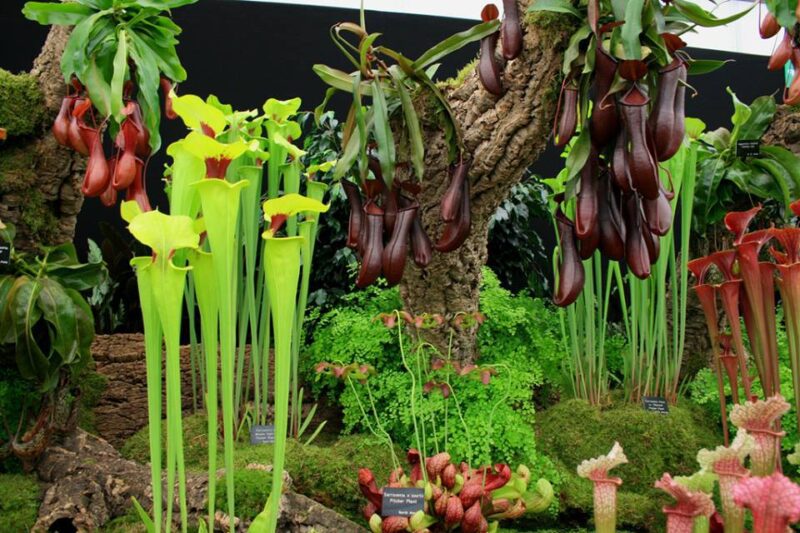
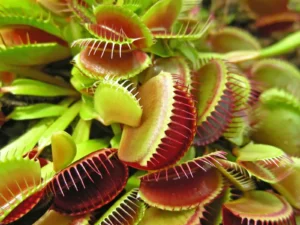

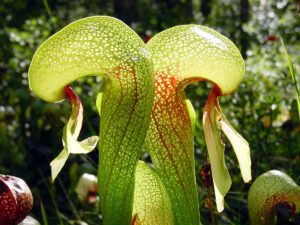
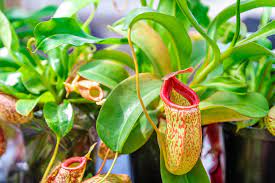
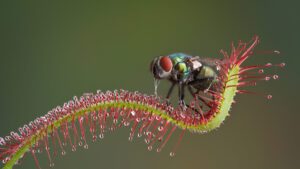
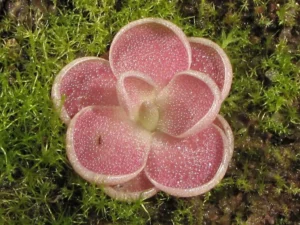
1 thought on “Amazing facts about 7 Insectivorous plants”